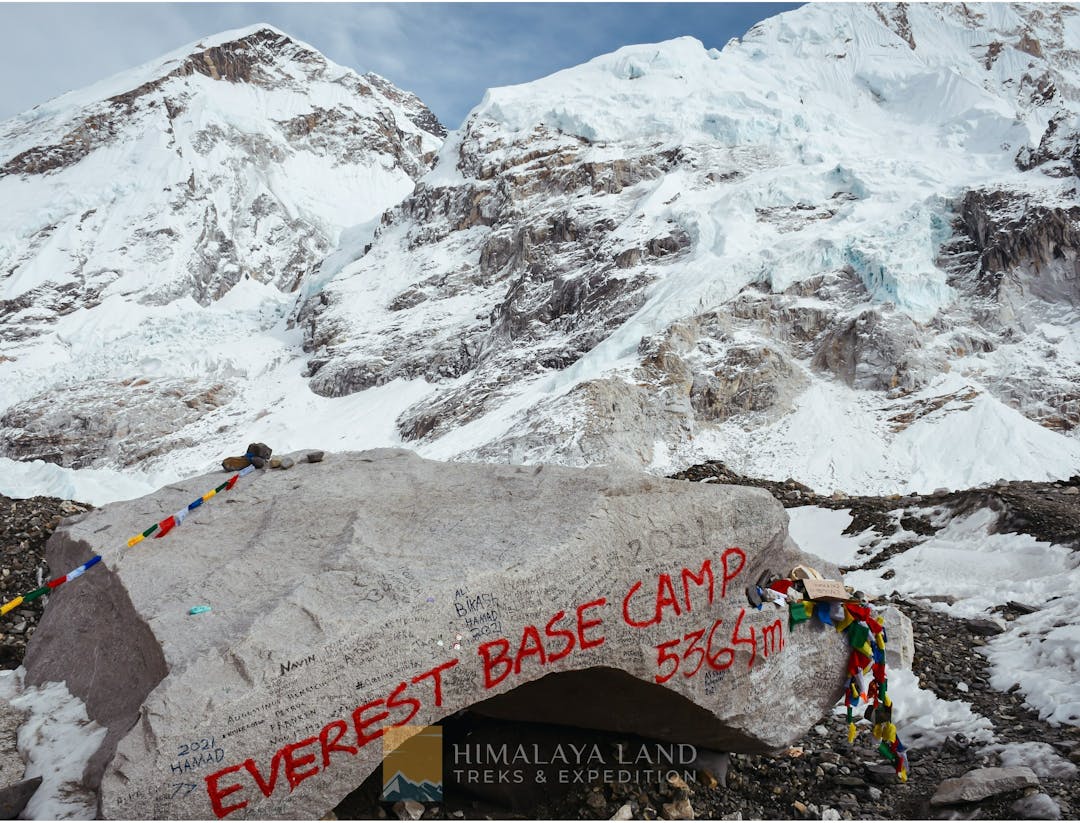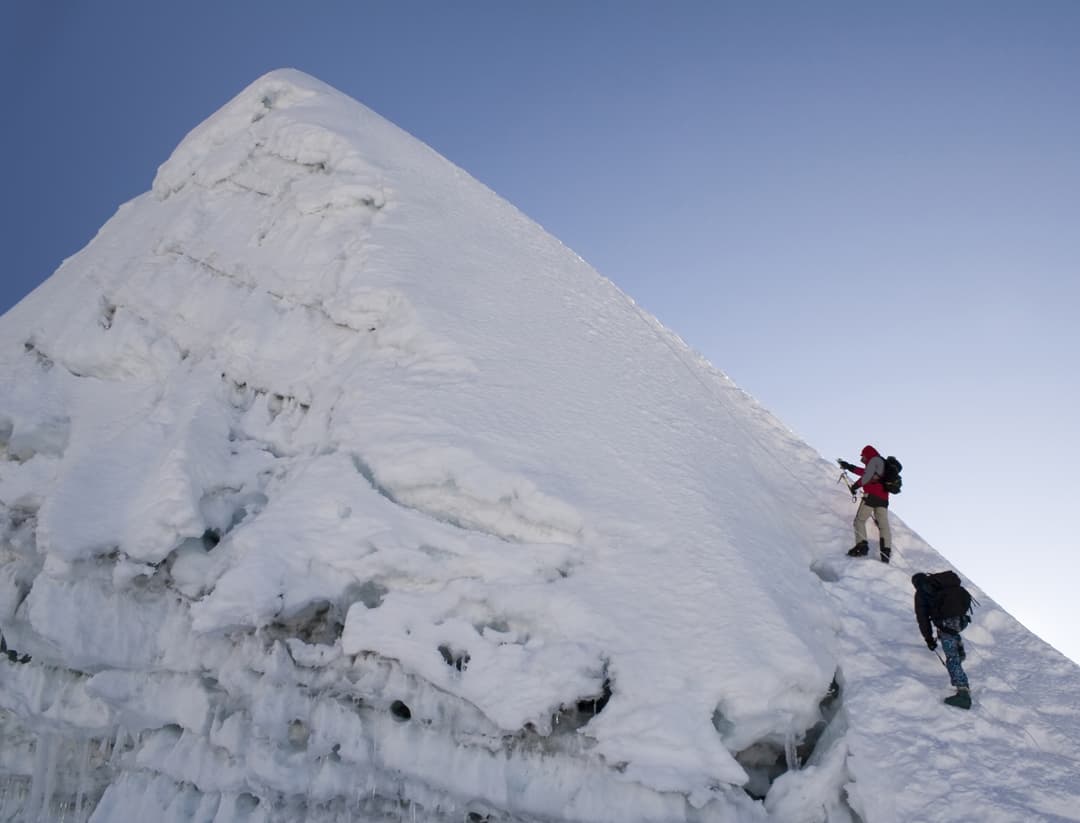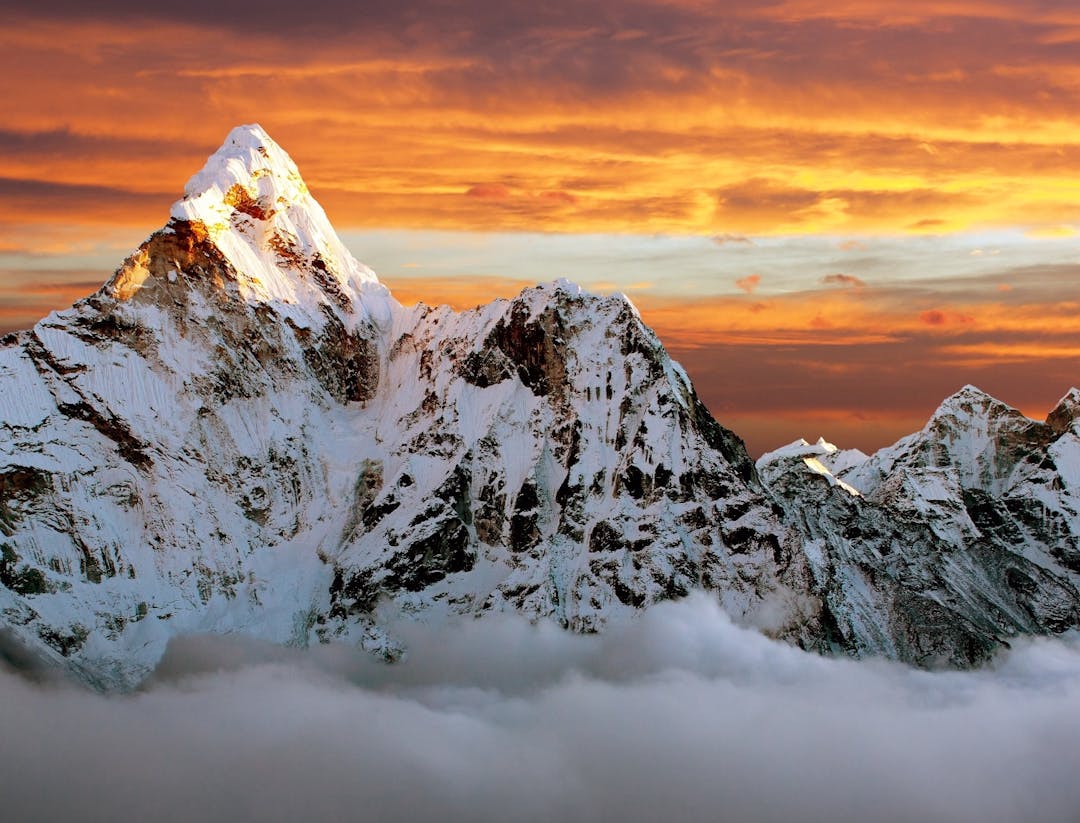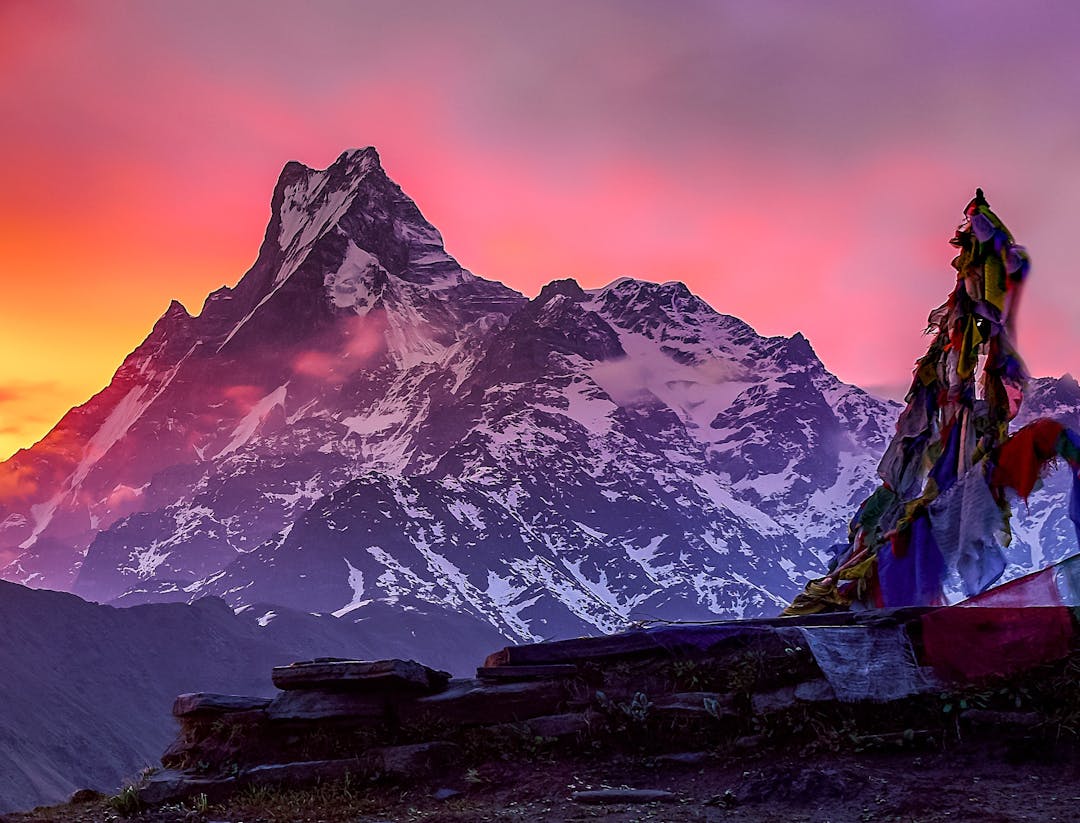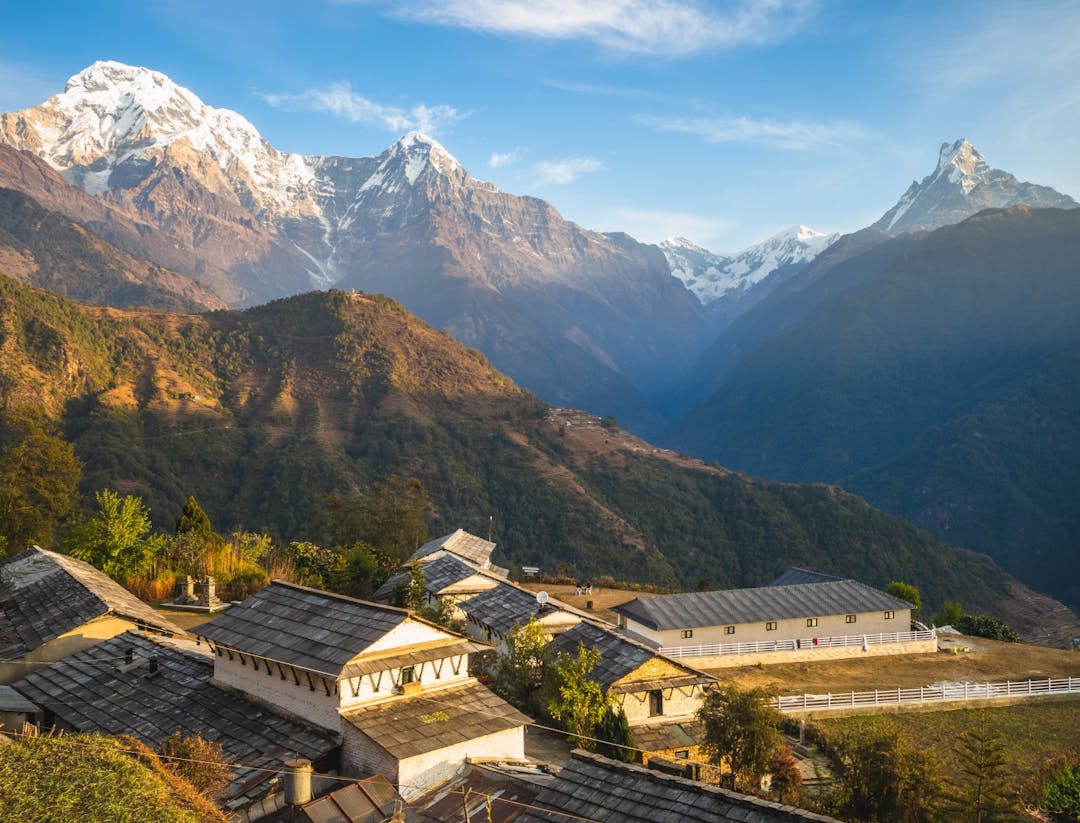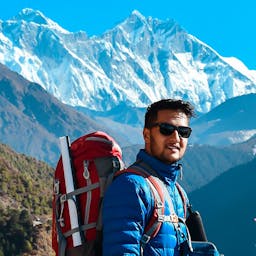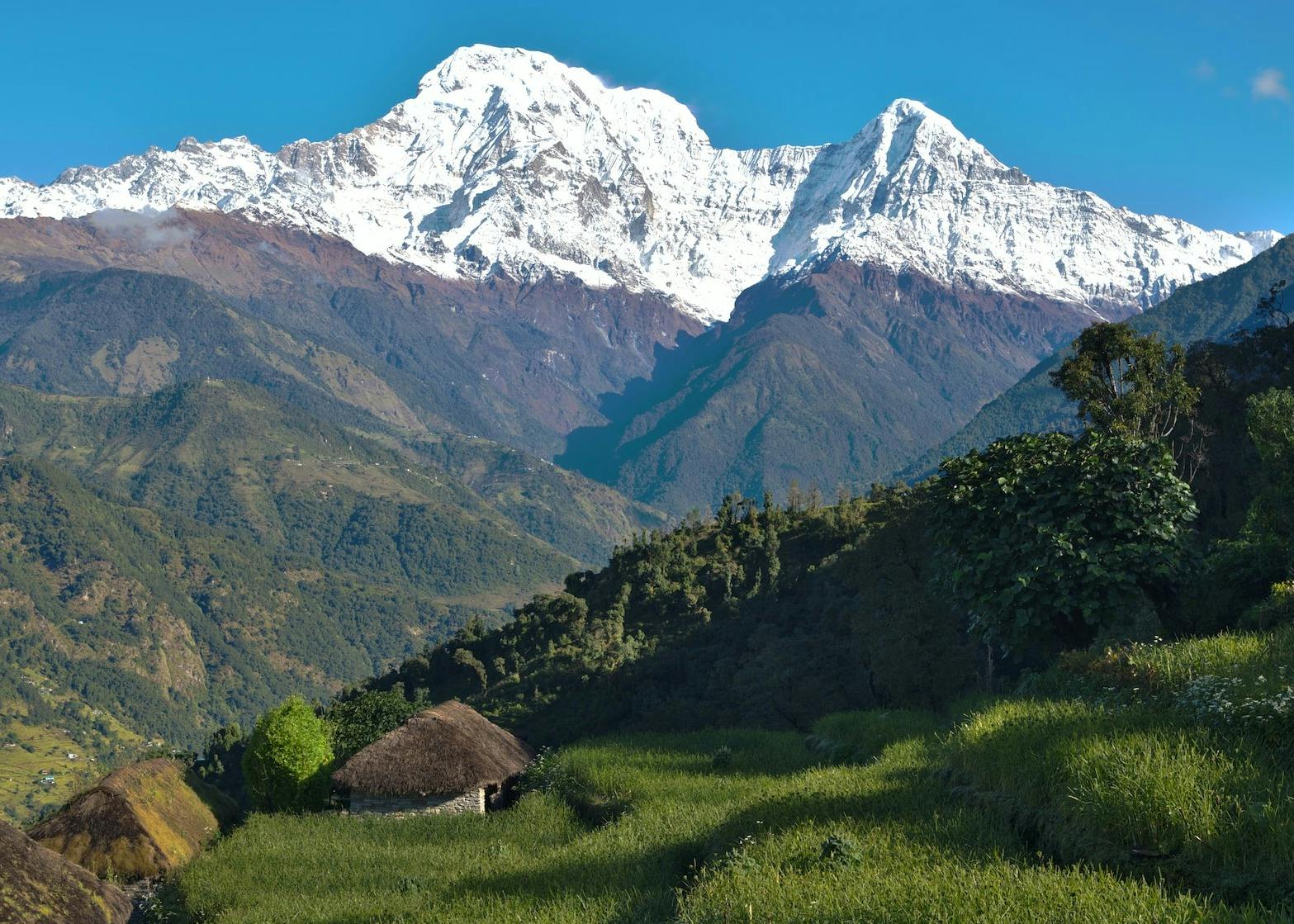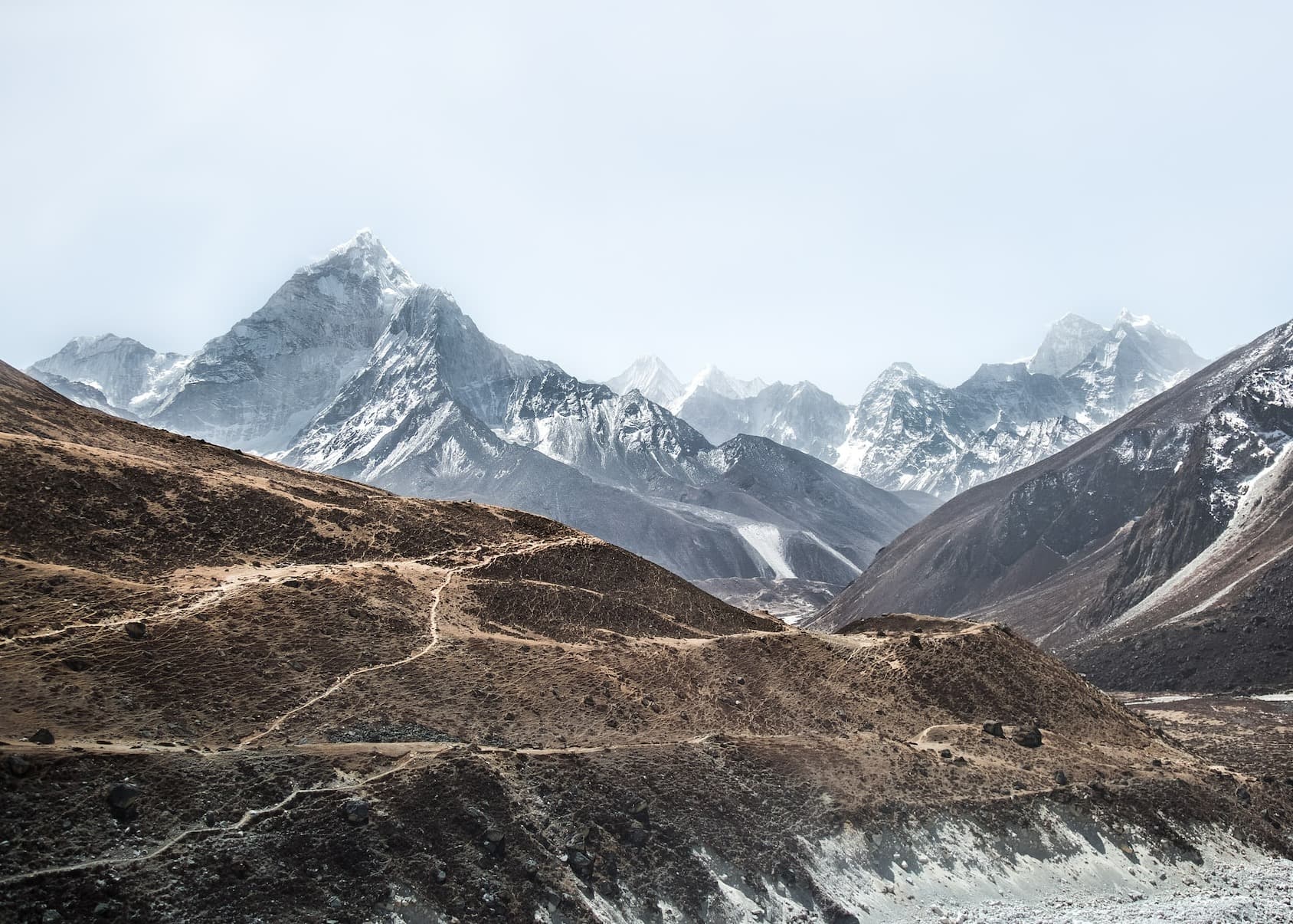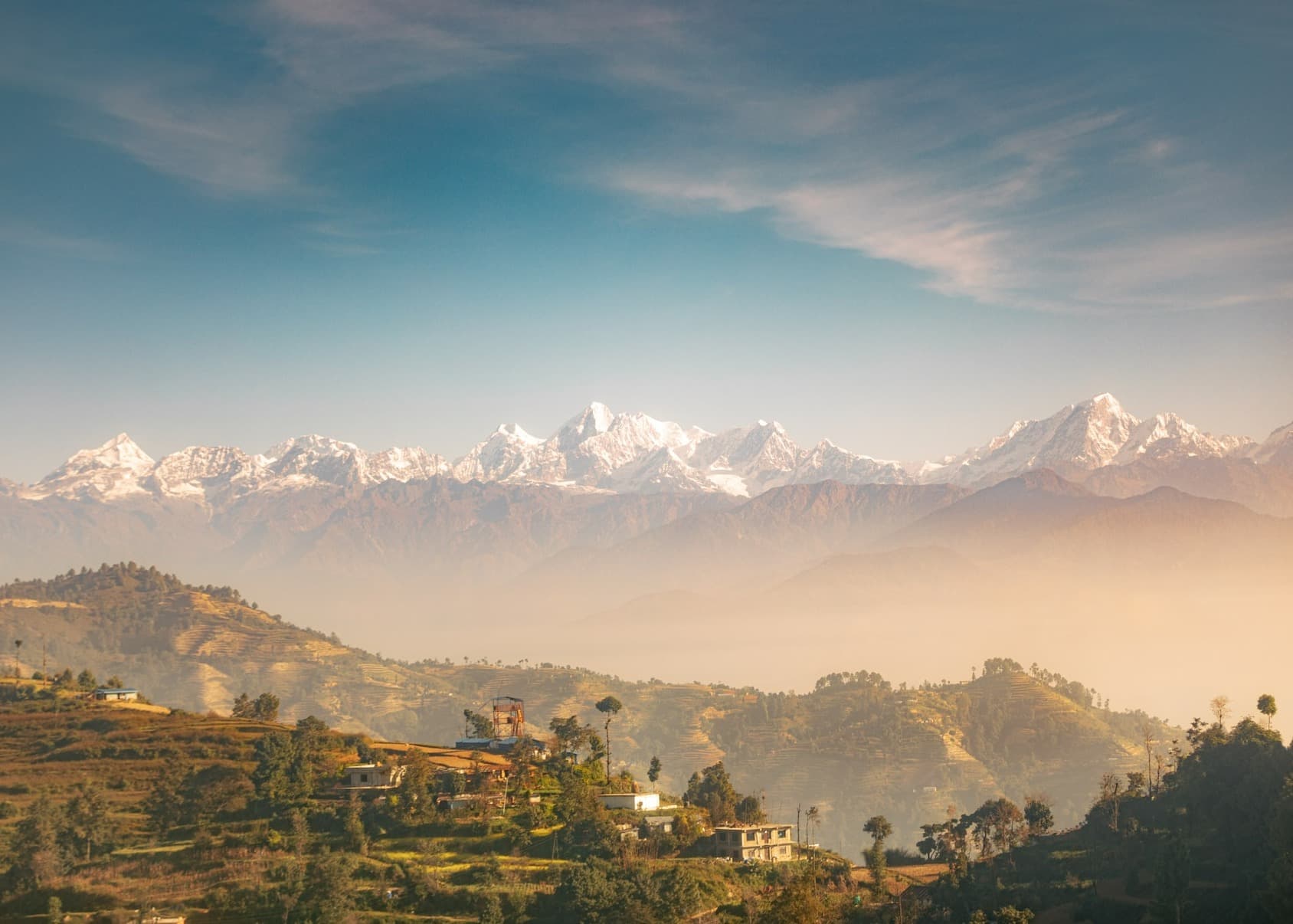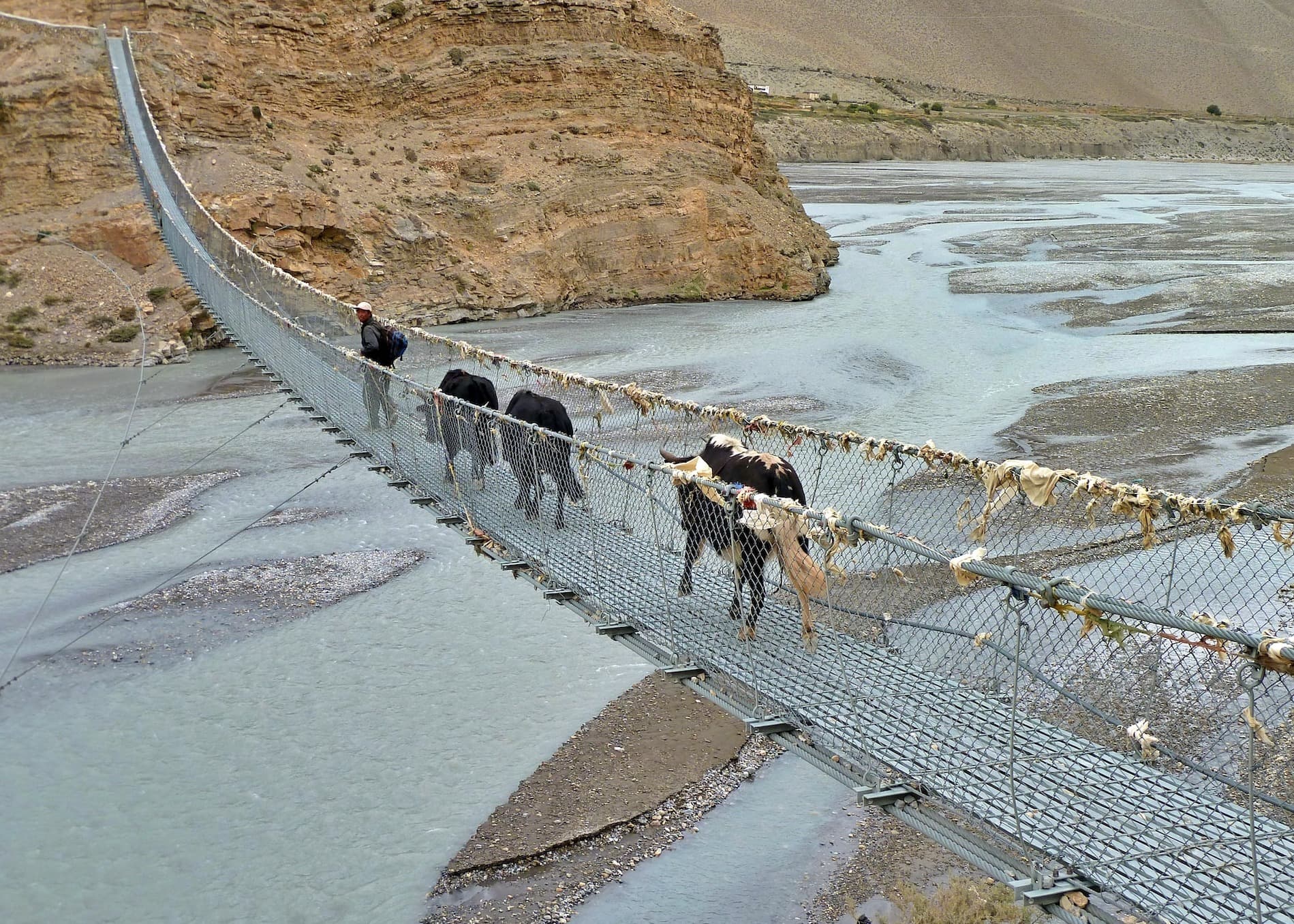- Altitude of Kanchenjunga Base Camp: Exploring the Heights
- Distance of Kanchenjunga Base Camp Trek?
- Where is Kanchenjunga Located?
- Route Overview
- Which Season is Best for Kanchenjunga Base Camp?
- Comfort and Serenity: Accommodation Choices for the Kanchenjunga Base Camp Trek
- Kanchenjunga Base Camp Trek Cost Breakdown
- Day-to-Day Itinerary for Kanchenjunga Base Camp Trek
- Kanchenjunga Base Camp Trek Difficult: Is It Suitable for Beginner Trekkers?
- Can I Do the Kanchenjunga Base Camp Trek Solo?
If reaching the summit of Kanchenjunga, the third highest peak in the world, seems daunting, fear not! You can still marvel at the mesmerizing beauty of this majestic mountain by embarking on the Kanchenjunga Base Camp Trek.
Kanchenjunga, also known as Kangchenjunga, standing tall at an impressive height of 8,586 meters (28,169 feet). Located in the eastern part of Nepal and spanning across the border into India.
The base camp of Kanchenjunga is the starting point for those embarking on the Kanchenjunga Base Camp Trek, an awe-inspiring journey through rugged terrains and pristine landscapes.
This incredible trek gives you the chance to experience the pristine wilderness of the Kanchenjunga Conservation Area in addition to breathtaking views of the snow-capped peaks. The trek is a complete package of adventure, nature, and cultural exploration thanks to its varied flora and fauna, charming mountain villages, and cultural encounters with Sherpa, Rai, and Limbu communities.
Altitude of Kanchenjunga Base Camp: Exploring the Heights
The Kanchenjunga Base Camp is situated at an elevation of approximately 5,143 meters (16,873 feet). It serves as a crucial acclimatization point for trekkers, allowing them to adapt to the high altitude before attempting further ascent towards the summit. The base camp offers stunning vistas of the towering Kanchenjunga peak and its neighboring peaks, creating a surreal and unforgettable experience for adventurers.
Distance of Kanchenjunga Base Camp Trek?
The Kanchenjunga Base Camp Trek is a challenging and rewarding journey that usually takes around 23-26 days to complete. The total distance covered during the trek is approximately 231 kilometers (143.5 miles), including both ascent and descent. The trail winds through remote villages, lush forests, cascading waterfalls, and high mountain passes, offering trekkers a diverse and captivating experience of the region's natural beauty.
Where is Kanchenjunga Located?
The Kanchenjunga Base Camp is located in the far east of Nepal, near the border with Sikkim. It is situated within the Kanchenjunga Conservation Area. To reach the base camp, you can take a flight from Kathmandu to Biratnagar, which is approximately a 45-minute journey. From Biratnagar, you can continue your journey to the Kanchenjunga region by road or air, depending on the available transportation options.
Route Overview
The trek begins with a short flight from Biratnagar to Suketar, from where you gradually ascend towards Lali Kharka. The trail winds through rhododendron forests, terraced fields, and charming villages, offering glimpses of local life and stunning mountain views.
As you continue your journey, the route leads you to Sincheburi Bhanjhyang, where lush forests and picturesque landscapes surround you. The trek then takes you to Phumphe, a tranquil village nestled amidst green hills. Walking further, you'll reach Yamphudin, a culturally rich village inhabited by diverse ethnic groups. Here, you can immerse yourself in the local customs and traditions.
The trail from Yamphudin to Amji Khola presents a combination of scenic beauty and serene surroundings. You'll witness breathtaking views of snow-capped peaks and the gentle flow of the river. Continuing your ascent, you'll trek to Tortong, where the rugged mountain terrain and panoramic Himalayan views leave you awe-inspired.
As you make your way towards Tseram, the landscapes transform into alpine forests and high-altitude passes. The views of towering peaks and glaciers create a surreal atmosphere. The journey then takes you to Ramche, the gateway to the Kanchenjunga South Base Camp, where you'll witness the grandeur of the Himalayas up close.
From Ramche, you'll visit the South Base Camp viewpoint before descending to Chukkung Pokhari. The trek offers mesmerizing views of glaciers and surrounding peaks. After a rest day in Ghunsa, a picturesque village, you'll continue towards Kangbachen, where the towering mountains surround you at every turn.
The trail further leads you to Lhonak, a remote village near the Kanchenjunga Glacier. Here, you'll experience the pristine wilderness and marvel at the beauty of the glaciers. The ultimate destination of the trek, Pangpema Base Camp, awaits you with its breathtaking views of the majestic Kanchenjunga Peak and its neighboring peaks.
After exploration and rest at the base camp, you'll retrace your steps back to Kangbachen, savoring the familiar landscapes and bidding farewell to the mountains. The trek then descends through Phale and Amjilosa, offering a peaceful atmosphere and glimpses of rural life.
As you approach the end of the trek, you'll pass through Chiruwa and Linkhim, experiencing a change in vegetation and encountering friendly local communities. Finally, you'll return to Suketar, where you'll catch a flight to Biratnagar and then to Kathmandu.
Which Season is Best for Kanchenjunga Base Camp?
The best season to visit the Kanchenjunga Base Camp depends on various factors such as weather conditions, accessibility, and personal preferences. Generally, the two most popular seasons for trekking to the Kanchenjunga Base Camp are spring and autumn
Spring Season (March to May): offers pleasant weather with moderate temperatures during the day and cooler temperatures at night. The rhododendron forests along the trail are in full bloom, adding vibrant colors to the landscape. However, occasional rainfall can be expected, and the visibility may not be as clear due to clouds and mist.
Autumn Season (September to November). is another excellent time to visit the Kanchenjunga Base Camp. The weather is generally stable and dry, providing clear views of the surrounding mountains. The temperatures are mild, and the skies are often blue. Autumn also offers a chance to witness the harvest season in the nearby villages.
Comfort and Serenity: Accommodation Choices for the Kanchenjunga Base Camp Trek
Tea Houses: Along the trekking route, you'll come across tea houses that offer simple yet cozy lodging. These tea houses are typically family-run establishments and provide rooms with basic beds, blankets, and shared bathroom facilities. Although the facilities may be modest, the warm hospitality and stunning mountain views more than make up for it.
Communication Facilities: While in the mountains, it's essential to stay connected and have access to communication. Many tea houses on the Kanchenjunga Base Camp Trek offer Wi-Fi services, allowing you to stay in touch with loved ones back home and share your adventure on social media. However, please note that the internet connection can be intermittent and limited in terms of speed and coverage.
Food Options: The tea houses also serve delicious meals to replenish your energy after a day of trekking. You can enjoy a variety of local and international dishes, including traditional Nepali dal bhat (lentil soup with rice), momos (dumplings), noodles, and more. These meals are freshly prepared and provide a taste of the local cuisine.
Camping Option: For those seeking a more immersive experience, camping is also available on the Kanchenjunga Base Camp Trek. Carrying your own camping gear allows you to set up camp amidst the stunning wilderness. However, keep in mind that camping requires more preparation, including food supplies and equipment.
Kanchenjunga Base Camp Trek Cost Breakdown
-
For solo travelers: The cost for a single person is US$ 2670. This includes all the essential aspects of the trek, such as permits, accommodation, meals, guide services, and transportation.
-
For small groups (2-4 people): The cost per person is US$ 2570, making it a more affordable option for those traveling in a small group. This price includes the same inclusions as for solo travelers.
-
For medium-sized groups (5-8 people): The cost per person decreases to US$ 2500, making it even more cost-effective. Traveling with a slightly larger group allows for shared expenses while still enjoying the same level of services and inclusions.
-
For larger groups (9-15 people): The cost per person reduces further to US$ 2450, making it the most economical option. Traveling with a larger group not only lowers the cost but also adds a sense of camaraderie and shared experiences.
Day-to-Day Itinerary for Kanchenjunga Base Camp Trek
Day01: Arrival at Kathmandu (1,320m/4,330ft)
Day02: Kathmandu Valley Sightseeing and Preparation for the trip
Day03: Fly from Kathmandu to Biratnagar (80m/262ft)
Day04: Fly Biratnagar to Suketar and Trek to Lali Kharka (2220m/7300ft)
Day05: Trek from Lali Kharka to Sincheburi Bhanjhyang (2240m/7400ft)
Day06: Trek from Sincheburi Bhanjyang to Phumphe (1858m/5900ft)
Day07: Trek from Phumphe to Yamphudin (1690m/5600ft)
Day08: Trek from Yamphudin to Amji Khola (2340m/7800ft)
Day09: Trek from Amji Khola to Tortong (2990m/9900ft)
Day10: Trek from Tortong to Tseram (3870m/13900ft)
Day11: Trek from Tseram to Ramche (4620m/15400ft)
Day12: Trek from Ramche to South BC Viewpoint to Chukkung Pokhari (4450m/14600ft)
Day13: Trek from Chukkung Pokhari to Sinelapche La (4724m/15500ft) to Mirgin La (4663m/15300ft) to Sinion La (4660m/15290ft) to Sele La (41153/13500ft) to Tamo La (3900m/12796ft) to Ghunsa (3595m/11794ft)
Day14: Rest Day Ghunsa (3595m/11794ft)
Day15: Trek from Ghunsa to Kangbachen (4150m/13650ft)
Day16: Trek from Kangbachen to Lhonak (4790m/15900ft)
Day17: Trek from Lhonak to Pangpema Base Camp (5160m/16923ft)
Day18: Exploration and Rest Day Pangpema Base Camp
Day19: Trek from Pangpema Base Camp to Kangbachen (4150m/13650ft)
Day20: Trek from Kangbachen to Ghunsa to Phale (3140m/10302ft)
Day21: Trek from Phale to Amjilosa (2140m/7100ft)
Day22: Trek from Amjilosa to Chiruwa (1190m/3900ft)
Day23: Trek from Chiruwa to Linkhim (1520m/4985ft)
Day24: Trek from Linkhim to Suketar (2700m/8856ft)
Day25: Flight from Suketar to Biratnagar and again flight to Kathmandu | Farewell Dinner
Day26: Final Departure from Kathmandu
Kanchenjunga Base Camp Trek Difficult: Is It Suitable for Beginner Trekkers?
The Kanchenjunga Base Camp Trek is renowned for its challenging nature, making it unsuitable for beginner trekkers seeking an introductory experience. The trek presents a series of obstacles that demand physical fitness, endurance, and prior trekking expertise. Navigating through rugged terrains, steep ascents and descents, and coping with high altitudes constitute significant challenges along the trail.
The remote and untamed terrain of the Kanchenjunga region adds to the trek's complexity. Basic teahouse accommodations are available, but the limited infrastructure demands trekkers to be prepared for a relatively basic living environment.
Another factor contributing to the trek's arduousness is its duration. Typically lasting around three weeks, the trek necessitates a significant time commitment and a high level of stamina to endure prolonged daily treks.
Despite its unsuitability for beginners, the Kanchenjunga Base Camp Trek presents an incredibly rewarding adventure for experienced trekkers who are adequately prepared. It is crucial to possess a commendable level of fitness, prior trekking experience, and the right equipment.
Can I Do the Kanchenjunga Base Camp Trek Solo?
No, you cannot do the Kanchenjunga Base Camp Trek solo. The trek requires you to have at least two hikers in a group, along with a registered guide. This is a mandatory requirement to obtain the necessary permits for trekking in the Kanchenjunga National Park.
The regulations are in place to ensure the safety of trekkers in the remote and challenging terrain of the Kanchenjunga region. Having a guide is especially important as they provide local expertise, knowledge of the trail, and assistance in case of emergencies.
In conclusion, the Kanchenjunga Base Camp Trek is a challenging and rewarding adventure for experienced trekkers who are well-prepared. Situated in the remote and captivating Kanchenjunga region of Nepal, this trek offers stunning views of the majestic Kanchenjunga, the third-highest mountain in the world.


